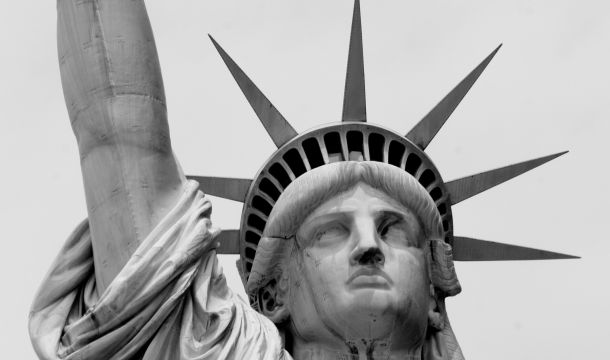NATIONAL RIGHT-TO-WORK GROWING
After going almost 50 years without any state passing a right-to-work law, six states have passed right-to-work laws in the last five years. The latest two states are Missouri and Kentucky, which became right-to-work states this year. Now there are 28 right-to-work states. The only recent setback to right-to-work has been in New Hampshire, where one of the state legislatures defeated a right-to-work bill by a narrow margin. Virtually all of the states with Republican governors and legislatures have right-to-work laws, except for New Hampshire, which would have been the first right-to-work state in the Northeast. Other States considering right-to-work laws include Colorado, Connecticut, Maine, Washington, Oregon, New Jersey, and also Puerto Rico. In addition, some local governments are passing right-to-work laws even if their states have not, but unions are litigating such circumstances contending that a local government may not pass right-to-work legislation, but only a State can. Right-to-work laws are being promoted as a way to increase employment and economic growth and to attract new business, and there are statistics backing up that claim.
President Trump has announced his support for the right-to-work concept. On February 1, 2017, Republican House members introduced a national right-to-work law, which would prohibit "union security" clauses in collective bargaining agreements requiring non-union members to pay union fees or dues. While the House would likely pass such a bill, which would likely be signed by the President, the bill would be subject to a filibuster in the Senate, requiring 60 votes to overturn. Republicans have only 52 seats, and thus Democrats could block the bill unless the Senate does away with its filibuster rules and adopts the so-called "nuclear" option.
Unions privately believe that a national right-to-work concept is likely, at least in the public sector. Only a 4-4 Supreme Court tie vote following the untimely death of Justice Scalia kept such a national requirement in the public sector from becoming the law of the land, on the basis that allowing mandatory contributions to labor unions is unconstitutional.
An increasing number of right-to-work states are having a negative effect on union membership. Union membership is now less than 11% of the public and private work forces, and approximately one-half of all union members in the U.S. are employed by the government. Membership in the private sector has dropped to just 6.4%. Union leaders privately forecast that they will lose over one-half of their membership under right-to-work laws. Such a loss of membership and dues also adversely affects the unions’ political strength. Some see a correlation in the loss of union members and Republican gains in mid-western states like Indiana, Wisconsin and Michigan, now all right-to-work states.
How Are Unions Reacting to the Right-to-Work Movement
Unions are fighting very hard legislatively, and also in the court system, to defeat right-to-work laws. Second, unions are moving to reduce their budgets and spending. Several unions have already announced reductions in their budgets of around 30%. Unions are also trying to directly address their membership in new and different ways so as to maintain as much membership as possible when dues are no longer mandatory.
At least one union has attempted to keep its members from withdrawing from "check-off" authorizations, which are lawful even in right-to-work states. These authorizations require members to have a portion of their paychecks withheld and forwarded to the union as union dues, if they sign a check-off card which is generally irrevocable for a period of one year. Most check-off authorization cards are vaguely worded so members are not aware of the brief periods each year they can revoke their check-offs without them being automatically renewed. In a recent case, a Michigan labor union required all members wishing to revoke their check-off authorizations to appear at the union hall in person along with photographic identification. Local 58, International Brotherhood of Electrical Workers, 365 NLRB No. 30 (2/10/17). The NLRB said this was an undue restriction on a member’s right to resign, but the union is appealing the case to court.
The relationship between President Trump and organized labor can be described as a "love-hate" relationship. Building trades generally have said nice things about the President, particularly since he supports building infrastructure and increasing jobs. Some 40% of union members voted for President Trump, and the President wants to maintain his image as being supportive of "blue collar" concerns. The unions generally say that they will support good Trump ideas and oppose bad Trump ideas, reflecting their overall attitude towards the President.
After going almost 50 years without any state passing a right-to-work law, six states have passed right-to-work laws in the last five years. The latest two states are Missouri and Kentucky, which became right-to-work states this year. Now there are 28 right-to-work states. The only recent setback to right-to-work has been in New Hampshire, where one of the state legislatures defeated a right-to-work bill by a narrow margin. Virtually all of the states with Republican governors and legislatures have right-to-work laws, except for New Hampshire, which would have been the first right-to-work state in the Northeast. Other States considering right-to-work laws include Colorado, Connecticut, Maine, Washington, Oregon, New Jersey, and also Puerto Rico. In addition, some local governments are passing right-to-work laws even if their states have not, but unions are litigating such circumstances contending that a local government may not pass right-to-work legislation, but only a State can. Right-to-work laws are being promoted as a way to increase employment and economic growth and to attract new business, and there are statistics backing up that claim.
President Trump has announced his support for the right-to-work concept. On February 1, 2017, Republican House members introduced a national right-to-work law, which would prohibit "union security" clauses in collective bargaining agreements requiring non-union members to pay union fees or dues. While the House would likely pass such a bill, which would likely be signed by the President, the bill would be subject to a filibuster in the Senate, requiring 60 votes to overturn. Republicans have only 52 seats, and thus Democrats could block the bill unless the Senate does away with its filibuster rules and adopts the so-called "nuclear" option.
Unions privately believe that a national right-to-work concept is likely, at least in the public sector. Only a 4-4 Supreme Court tie vote following the untimely death of Justice Scalia kept such a national requirement in the public sector from becoming the law of the land, on the basis that allowing mandatory contributions to labor unions is unconstitutional.
An increasing number of right-to-work states are having a negative effect on union membership. Union membership is now less than 11% of the public and private work forces, and approximately one-half of all union members in the U.S. are employed by the government. Membership in the private sector has dropped to just 6.4%. Union leaders privately forecast that they will lose over one-half of their membership under right-to-work laws. Such a loss of membership and dues also adversely affects the unions’ political strength. Some see a correlation in the loss of union members and Republican gains in mid-western states like Indiana, Wisconsin and Michigan, now all right-to-work states.
Related Content
Get Email Updates
Recent Content

Update of Work Authorization Immigration Status as of October 8, 2025

Workplace Investigations Largely Shut down, but Courts Remain Open during Shutdown for Now

Kirk’s Killing Cautions Employers To Consider Speech Policing

Trump Nominates Appointments to NLRB and EEOC but Policy Changes Likely to Be Delayed

DOL Launches Self-Audit Programs Designed to Help Employers Improve Compliance
